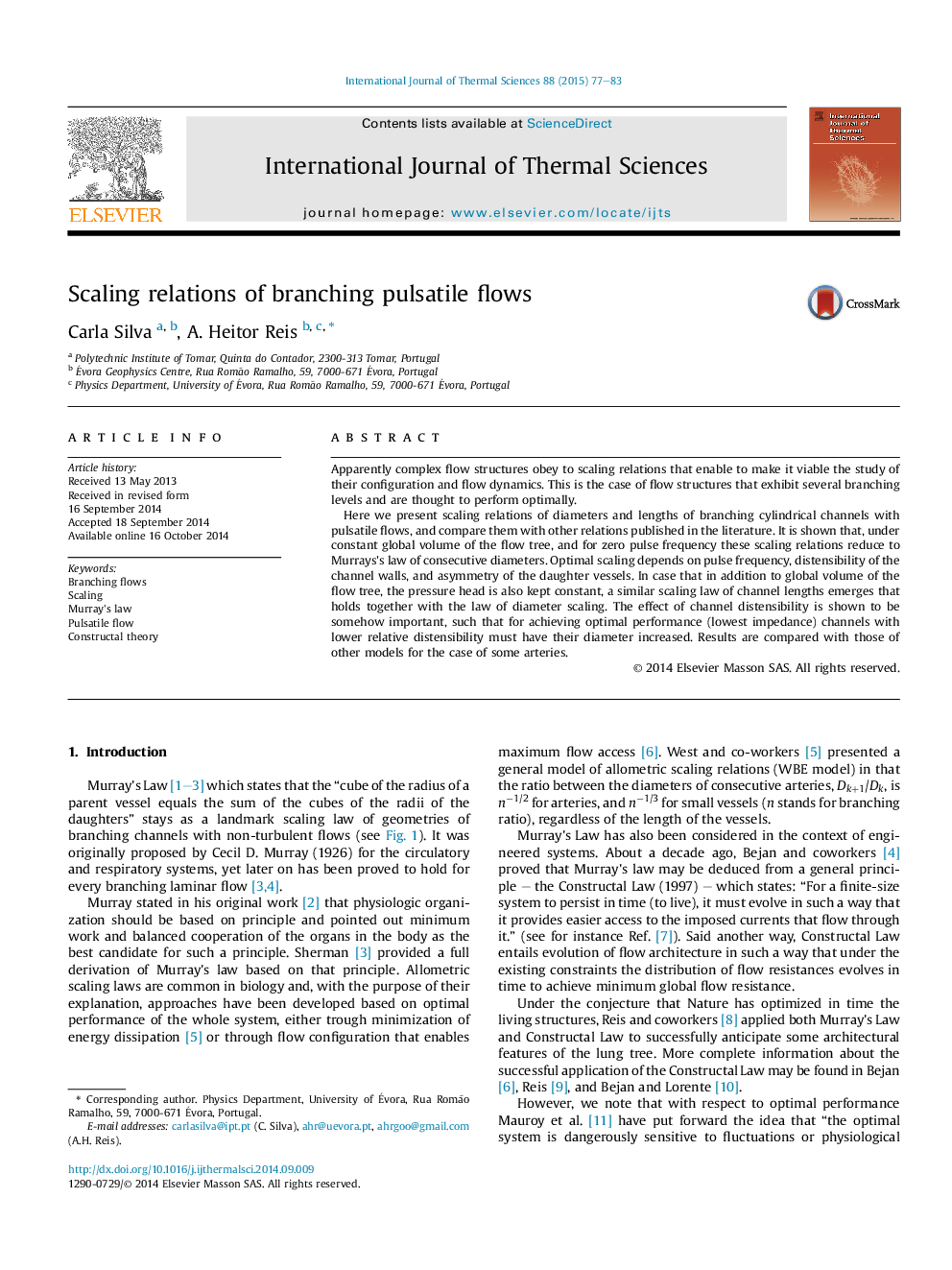| Article ID | Journal | Published Year | Pages | File Type |
|---|---|---|---|---|
| 668244 | International Journal of Thermal Sciences | 2015 | 7 Pages |
•We put forward the scaling relations of optimal branching in pulsatile flow.•We show that at zero frequency they reduce to Murray's laws.•We show how pulse frequency affects flow impedance.•We show how channel wall distensibility affects optimal diameter.
Apparently complex flow structures obey to scaling relations that enable to make it viable the study of their configuration and flow dynamics. This is the case of flow structures that exhibit several branching levels and are thought to perform optimally.Here we present scaling relations of diameters and lengths of branching cylindrical channels with pulsatile flows, and compare them with other relations published in the literature. It is shown that, under constant global volume of the flow tree, and for zero pulse frequency these scaling relations reduce to Murrays's law of consecutive diameters. Optimal scaling depends on pulse frequency, distensibility of the channel walls, and asymmetry of the daughter vessels. In case that in addition to global volume of the flow tree, the pressure head is also kept constant, a similar scaling law of channel lengths emerges that holds together with the law of diameter scaling. The effect of channel distensibility is shown to be somehow important, such that for achieving optimal performance (lowest impedance) channels with lower relative distensibility must have their diameter increased. Results are compared with those of other models for the case of some arteries.
